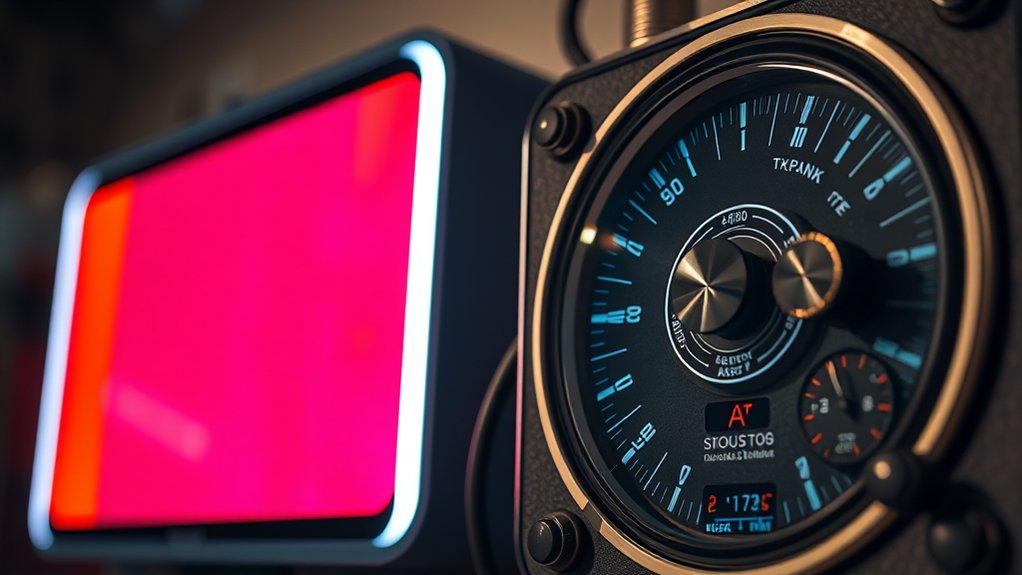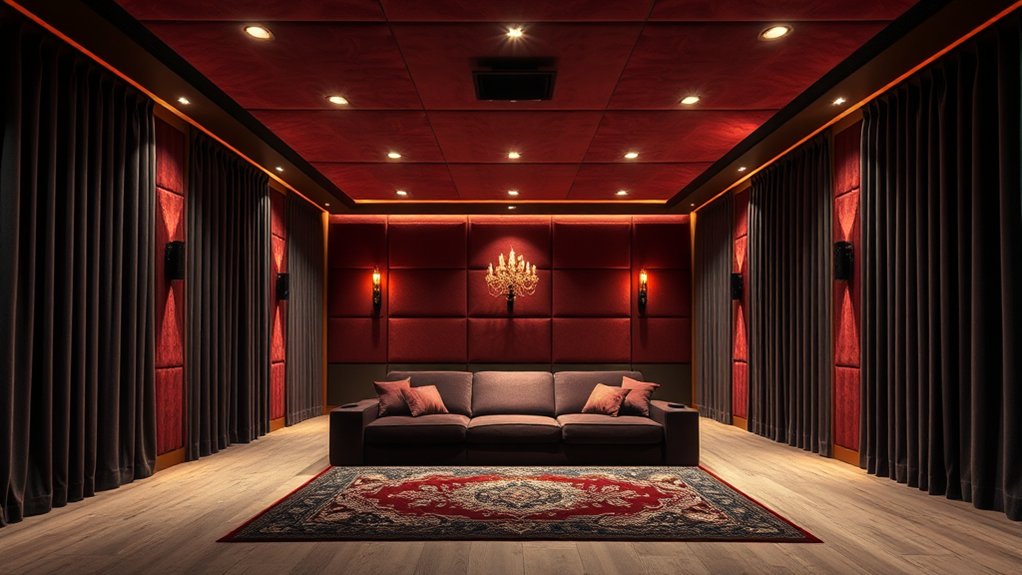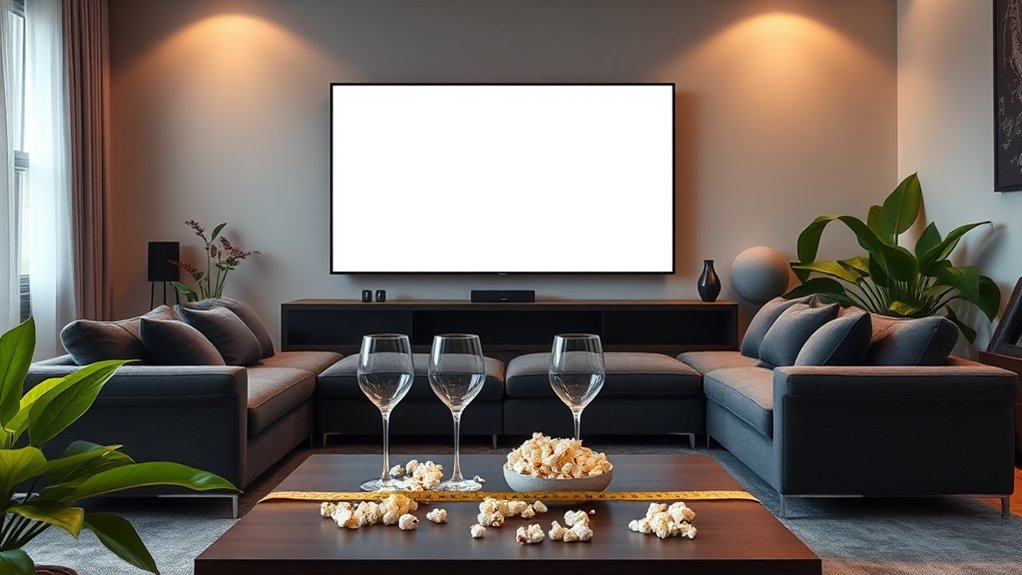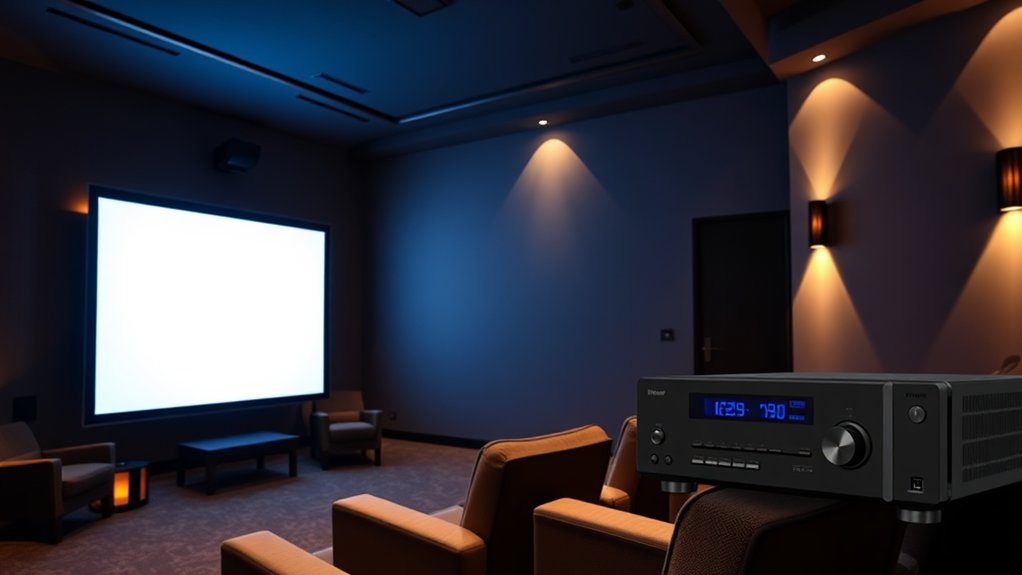When deciding between electric and manual screens, consider your needs. Electric screens are like an automatic coffee maker, giving you effortless convenience with remote controls, perfect for frequent presenters. Conversely, manual screens are straightforward, budget-friendly, and user-friendly—but require a little more effort to pull down. Think about your installation skills, room decor, and maintenance preferences, as these factors can affect your choice. Want to reveal more details that can help you choose the right fit?
Key Highlights
- Motorized screens offer convenience with remote control, ideal for frequent presentations, while manual screens require more physical effort for deployment.
- Manual screens are more budget-friendly, typically costing between $50 and $1,500, while motorized options can exceed $4,000.
- Installation of motorized screens needs professional setup, while manual screens can be installed easily by the user in about an hour.
- Electric screens provide a sleek look with hidden cords, enhancing aesthetics; manual screens may disrupt room design due to bulkiness.
- Manual screens generally offer better durability and reliability due to simpler mechanics, making them suitable for occasional use.
Ease of Use: A Comparative Overview
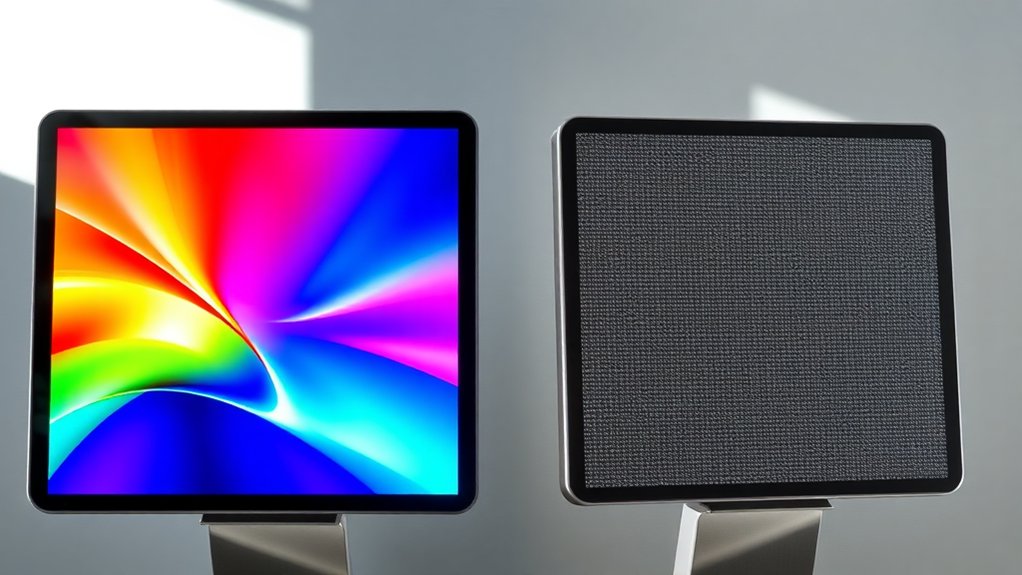
Have you ever wondered how the ease of use between motorized and manual screens really stacks up? With motorized screens, you get the luxury of remote control or wall switches—no heavy lifting required! Imagine hosting a presentation; you simply press a button to drop the screen—easy peasy. Conversely, manual screens need a physical pull, which can feel cumbersome, especially for larger versions or in hard-to-reach spots. If you’ve got limited mobility, that spring-and-roller mechanism mightn’t be your best friend. Motorized screens additionally come with programmable settings, so if you’re a frequent presenter, they’re a significant improvement. Moreover, because of their fewer moving parts, manual screens are often more reliable over time. Ultimately, your choice depends on how you’ll use it, but convenience definitely tips the scale towards motorized screens automation!
Cost and Budget Considerations: Weighing Your Options
Wondering how to make the right choice between manual and motorized screens regarding cost and budget?
First, consider that manual screens often come with a lower price tag, usually ranging from $50 to $1,500, depending on the type.
On the other hand, motorized screens can run from several hundred to over $4,000, with added costs for professional installation and electrical work.
Think of it this way: manual screens are straightforward and budget-friendly, whereas motorized options bring advanced features, like remote control and programmability. In fact, motorized screens typically provide better longevity and marketability compared to manual options. Additionally, electric screens are ideal for daily use, which may justify the higher investment for consistent performance.
Nevertheless, the latter’s complex mechanics can lead to higher maintenance costs over time.
Installation Requirements: DIY vs. Professional
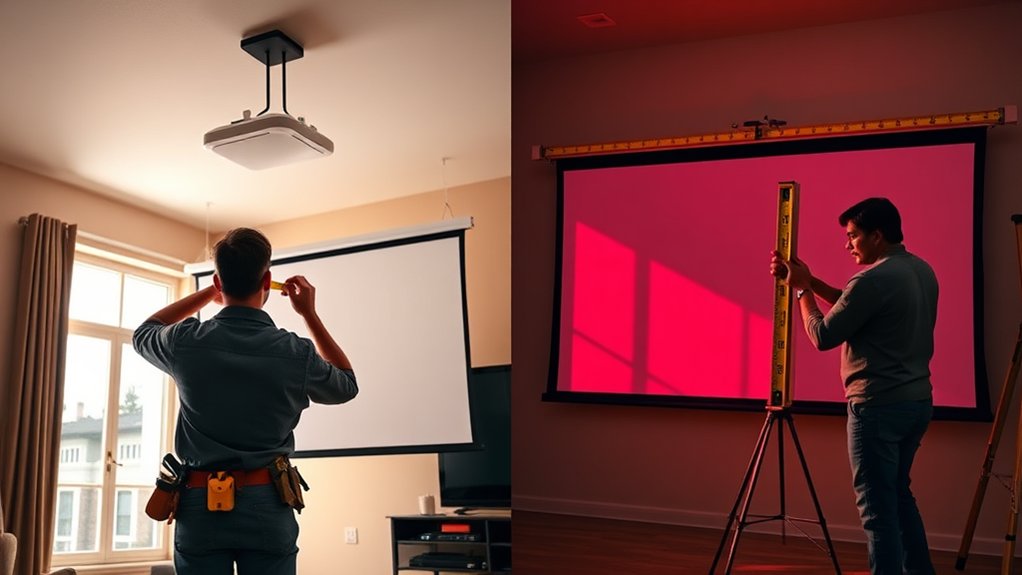
In relation to installing your screen, whether you choose to go the DIY route or hire a professional can make a significant difference in both the process and the end result.
Electric screens, with their complex wiring and hidden electrical components, often require a qualified electrician to guarantee a safe set-up—after all, nobody wants a wiring mishap! Additionally, the appropriate electrical configuration is essential for the operation of electric screens.
Electric screens require professional installation to ensure safety and avoid potential wiring issues.
Conversely, manual screens provide an inviting DIY experience, allowing you to install them in about an hour using just basic tools. You’ll just need a drill and some patience.
As you install a motorized screen, it can feel like assembling a puzzle, whereas a manual screen is straightforward and definitely less stressful. Ultimately, your choice hinges on your skill level and how much time you’re willing to invest.
Aesthetic and Space Considerations: Enhancing Room Design
When you’re considering how a screen fits into your overall room design, it’s not just about functionality; aesthetics and space play a likewise essential role.
Electric screens, with their sleek, minimal hardware, offer a modern touch that integrates effortlessly with contemporary decor. You won’t have to deal with visible cords, which means a cleaner, less cluttered look—perfect for those minimalist vibes.
Conversely, manual screens, although providing a variety of fabric choices for personal flair, can impose limitations on furniture placement because of their bulkiness.
Plus, can we really call a screen “stylish” with cords hanging everywhere?
In the end, choosing the right screen improves not just your room’s look but its overall flow and openness, so think carefully!
Functionality and Features: What to Expect
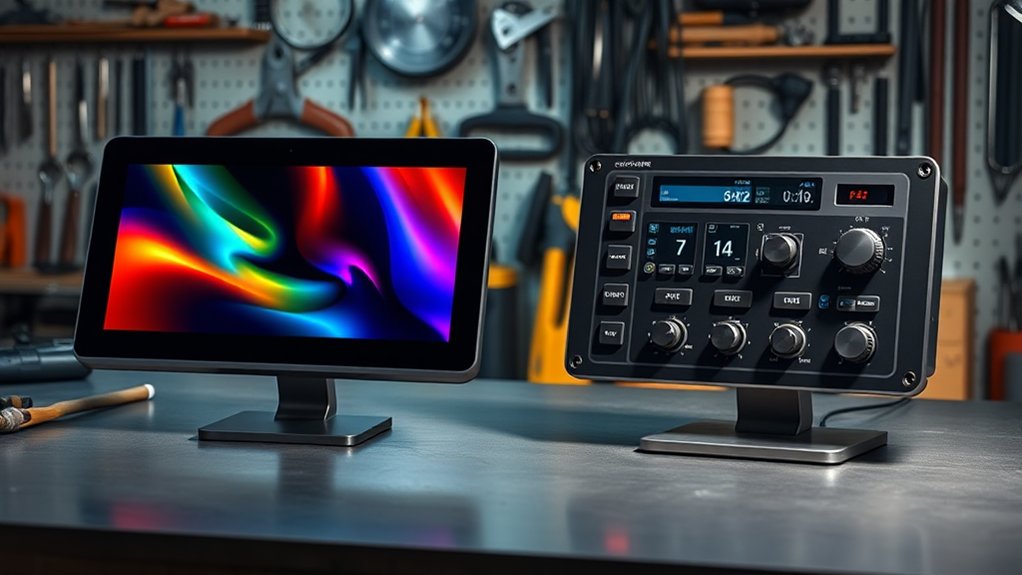
Choosing the right screen type can feel like a pivotal decision, especially when weighing their functionality and features. Electric screens offer you the luxury of remote control operation, letting you effortlessly deploy or retract the screen with a simple click. Wouldn’t you rather spend those few seconds lounging on your couch?
Conversely, manual screens provide a no-fuss, low-tech option that’s all about simplicity and durability. If you’ve got the installation skills, setting one up is a walk in the park.
Electric models often come with advanced features, like programmable settings and tab-tensioning systems for that sleek, flat finish. So whether you’re a tech enthusiast or a casual user, there’s an ideal screen waiting for you!
Durability and Reliability: Long-Term Considerations
As you might focus on the features that screens offer, don’t overlook their durability and reliability, as these factors can greatly influence your long-term satisfaction.
Manual screens, with their simple mechanics, often outlast their motorized counterparts, thanks to fewer failure points—think of them as the tortoises in a race where motorized screens might zip ahead but tire out quickly.
The high-quality materials in both types bolster strength, but manual screens typically handle rough treatment better.
Although motorized screens boast conveniences, they require more maintenance, like regular motor inspections—who wants to wrestle with electrical issues?
In the end, if you want reliability over years, manual screens may hold the edge, provided you give them a little care and attention.
Recommended Use Cases: When to Choose Each Type
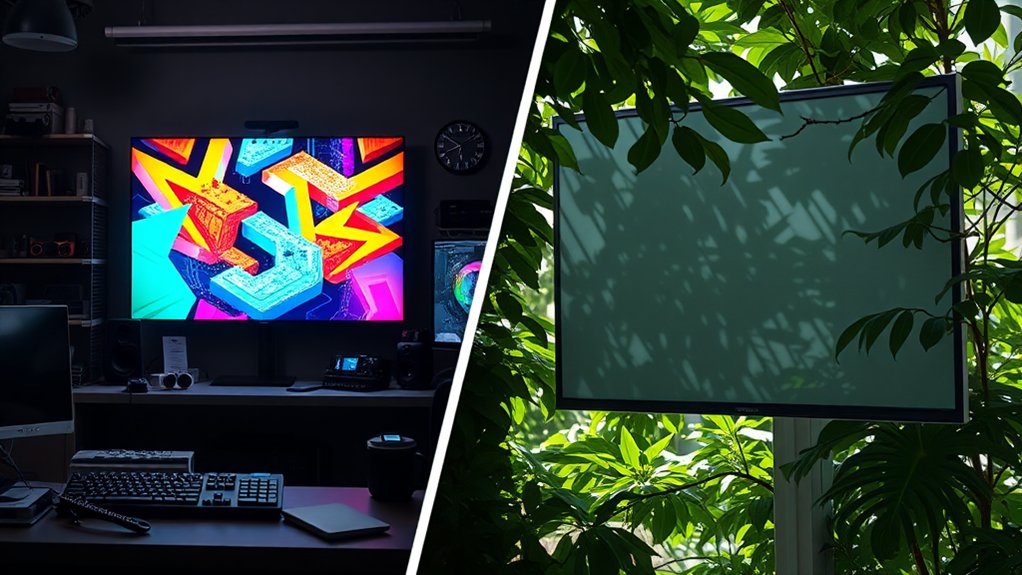
Having considered the durability and reliability of manual and electric screens, it’s important to recognize that each type serves unique use cases depending on your specific needs and the environment.
If you’ve got a small room and plan to use the screen infrequently, a manual projector screen is a great pick; it’s compact and easy to install without complicated wiring.
Conversely, if you’re in a larger space, like a conference hall or home theater, electric screens shine with their remote operation and convenience—ideal for frequent presentations.
Just imagine setting up a movie night with a click instead of a pull! Ultimately, think about how often you’ll use the screen and the space it occupies—because that’ll guide your best choice.
Maintenance Needs: Keeping Your Screen in Top Shape
With regard to keeping your screen in top shape, maintenance isn’t just a chore—it’s your ticket to guaranteeing a long-lasting viewing experience.
You should regularly clean your screen with soft, non-abrasive cloths and specific cleaning solutions. Remember to avoid harsh chemicals or abrasive materials that could damage delicate surfaces.
Monthly visual inspections are vital; keep an eye out for cracks or loose components, especially after severe weather. For motorized screens, make certain tracks are free of debris and that the power supply remains stable.
Additionally, don’t forget basic preventative care, like retracting screens when not in use. After all, who wants to watch a movie through a cracked screen?
Prioritize your screen’s health, and it’ll pay you back with great viewing moments!
User Experience: Feedback From Owners

In relation to user experience, the difference between electric and manual screens can feel like night and day.
With electric screens, you’ve got the luxury of remote control or wall switches, making deployment effortless. Imagine being able to just press a button—it’s almost like magic, right?
Manual screens, conversely, require you to physically pull them down, which can be a workout in itself. Plus, electric screens usually position images precisely, whereas manual screens might leave you guessing.
Frequent users often favor the electric option for its convenience, whereas budget-conscious occasional users might appreciate the manual’s lower cost.
In the end, choosing one over the other boils down to how much effort and precision you’re willing to put into your viewing experience.
Final Thoughts on Screen Selection: Making the Right Choice
When considering which type of screen to choose, it might feel a bit like picking between a trusty old bicycle and a state-of-the-art electric scooter: both can get you to your destination, but the ease and experience they offer can vary greatly.
Electric screens certainly bring convenience—imagine being able to deploy your screen with just a click! Nonetheless, those upfront costs can leave your wallet feeling a little light.
On the flip side, manual screens offer budget-friendly alternatives, allowing you to invest more in a quality projector instead.
Think about your needs: if you frequently host gatherings or presentations, electric options shine, but for casual movie nights, a manual screen might suffice.
What’s your perfect fit?
Frequently Asked Questions
Can I Convert a Manual Screen to a Motorized One?
Yes, you can convert a manual screen to a motorized one by installing a motorized roller and related components. Just guarantee your existing screen is compatible and follow proper installation guidelines for the best results.
What Is the Lifespan of Each Screen Type?
The lifespan varies: LCD screens typically last 30,000 to 60,000 hours with care, whereas OLEDs range from 10,000 to 40,000 hours. Factors like usage, environment, and maintenance greatly impact durability for both types.
How Do Weather Conditions Affect Screen Performance?
Weather conditions can drastically affect screen performance. You’ll notice dim displays in extreme heat and sluggish responses in cold. Rain or humidity can cause electrical failures, so consider weather-proof screens for reliable outdoor usage.
Are There Any Safety Concerns With Motorized Screens?
Yes, there are safety concerns with motorized screens. You should verify proper installation and maintenance to prevent electrical hazards. Additionally, regularly inspect components to confirm they’re safe and functioning correctly, minimizing risks for children and pets.
Can I Use Manual Screens Outdoors Effectively?
Yes, you can use manual screens outdoors effectively. They provide insect protection, adjust easily, and withstand various weather conditions. Plus, they’re cost-effective and low maintenance, making them a great choice for your outdoor spaces.

